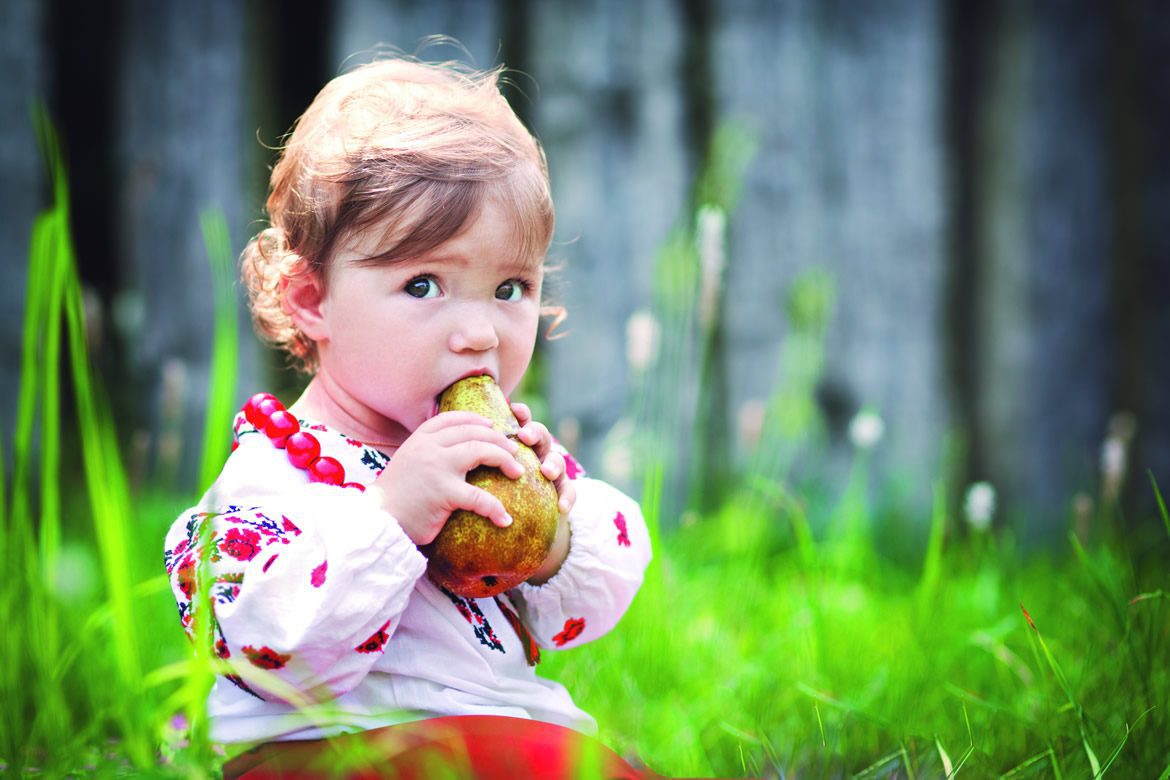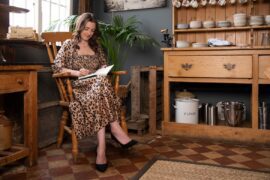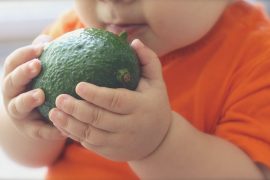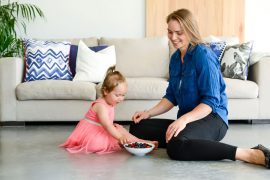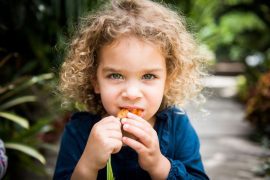By Gill Rapley
It’s now over seven years since the World Health Organization (WHO) published its recommendation that six months should be the earliest age for expanding a baby’s diet beyond breastmilk. The degree to which this recommendation has been embraced – by professionals as well as parents – varies hugely, with some choosing to ignore it altogether. But is it OK to start earlier if you’re doing baby-led solids* (BLS)? This is a question that I am constantly asked, and which I find very hard to answer with a simple yes or no.
The problem is that the words we use to talk about introducing solid foods just don’t work when we’re trying to explain BLS. What exactly do we mean by ‘starting solids’? With the traditional (spoon-feeding) approach to introducing solids, the baby both meets and eats his first solid food in the same sitting – the two things happen only moments apart. So, not only is ‘starting solids’ easy to define but the parents know – to the minute – exactly when it has happened.
With BLS, there can be a time gap of several days or even weeks between the moment the baby first meets solid food and the moment when he first eats it. And the first food he meets may not be the first food he eats! And that’s assuming we can even pinpoint exactly when the first ‘meeting’ took place! Confused? Picture the following scenes from the life of a typical new family, where the parents have adopted a truly ‘baby-led’ approach to infant feeding:
Scene 1, one week after the birth:
Baby Jack is cradled in his mother’s arms while she eats a meal. He is either breastfeeding or asleep. He is probably only dimly aware of her eating, through the noises she (and her stomach) are making. He is able to taste some of what she has eaten through her breastmilk, so he could be said to be ‘sharing her food’.
Scene 2, two months after the birth:
Jack is being held in a sitting position facing outwards on his father’s lap while his parents eat a meal. Jack looks with interest at his mother, the plates, the food and the cutlery, as well as other objects within his field of view. He responds excitedly when he is spoken to. He is ‘joining in’ the mealtime even though he isn’t engaging with the food.
Scene 3, four months after the birth:
Jack is being held in a sitting position facing outwards on his father’s lap while his parents eat spaghetti bolognese. He watches as his mother and father twirl their spaghetti and lift it to their mouths, and he waves his arms excitedly. He reaches out towards his dad’s plate and gives the pile of pasta and sauce a hefty smack. He has made the acquaintance of his first solid food!
Scene 4, five months after the birth:
Jack is being held in a sitting position facing outwards on his mother’s lap while his parents eat a roast dinner. He watches as his mother lifts food to her mouth and he tries to grab her hand. She puts some sticks of carrot on the table top in front of him. Jack looks at them, pushes them around, then picks one up, squeezes it, turns his hand over – then drops it. He picks up another and gets it to his mouth, where he explores it with his lips and tongue. Then he drops that one too. He has experienced a new taste and an interesting texture – but he hasn’t eaten anything.
Scene 5, six months after the birth:
Jack is sitting in a high chair, with a rolled-up towel behind him for support. His parents are eating a chicken casserole. Jack’s mother puts a piece of potato, a broccoli floret and a chicken drumstick on his tray. Jack has a go at all three, doing a lot of squishing, squashing and banging, and occasionally biting off small amounts which he chews and then allows to fall out of his mouth. He has a great time, even though he doesn’t swallow anything.
Scene 6, seven months after the birth:
Jack is sitting in his high chair, sharing a meal of bread, avocado, cheese and fruit with his parents. His mother comments to his father that the smell of Jack’s poo has changed recently, and she can definitely make out bits of partly-digested food in his nappies. But neither of them can pinpoint the meal at which Jack swallowed his first mouthful. They conclude that it doesn’t really matter.
So, did Jack’s parents ‘start’ him on solid foods or did Jack ‘start solids’ himself? And when exactly did that happen? Not easy, is it? The truth is that the word ‘start’ is almost meaningless in this context; BLS babies start when they are ready.
However, as parents we have to decide when we will start to provide our babies with the opportunity to start solids. And it’s at this point, when I’m asked, that I tend to support the six-months rule. The reason is that there is a risk to saying it’s OK to ‘start’ BLS earlier than six months:
If parents don’t fully understand the theory that underpins the BLS approach they may not appreciate that ‘meeting’ comes before ‘eating’. This can lead them (or their well-meaning relatives) to ‘help’ their baby to eat when she is not really ready, for example by putting food into her mouth for her. Once control is taken away from the baby, BLS falls down – and the risks of choking and over-feeding become are greatly increased.
So, since we now have good scientific evidence that breastmilk is all most babies need until they are around six months old, and since most of them won’t truly eat anything solid before that, there simply doesn’t seem to be any need to recommend ‘starting’ earlier.
* Baby-led solids is known as baby-led weaning (BLW) in the UK. This is to reflect that fact that, although it may take months or even years to be completed, weaning begins with the baby’s first mouthful of solid food.

